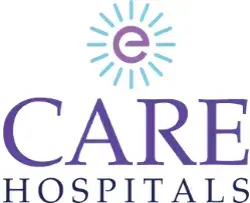-
Doctors
-
Specialities & Treatments
Centre of Excellence
Specialties
Treatments and Procedures
Hospitals & Directions HyderabadCARE Hospitals, Banjara Hills CARE Outpatient Centre, Banjara Hills CARE Hospitals, HITEC City CARE Hospitals, Nampally Gurunanak CARE Hospitals, Musheerabad CARE Hospitals Outpatient Centre, HITEC City CARE Hospitals, Malakpet
HyderabadCARE Hospitals, Banjara Hills CARE Outpatient Centre, Banjara Hills CARE Hospitals, HITEC City CARE Hospitals, Nampally Gurunanak CARE Hospitals, Musheerabad CARE Hospitals Outpatient Centre, HITEC City CARE Hospitals, Malakpet Raipur
Raipur
 Bhubaneswar
Bhubaneswar Visakhapatnam
Visakhapatnam
 Nagpur
Nagpur
 Indore
Indore
 Chh. Sambhajinagar
Chh. SambhajinagarClinics & Medical Centers
Book an AppointmentContact Us
Online Lab Reports
Book an Appointment
Consult Super-Specialist Doctors at CARE Hospitals

Cerebral Venous Sinus Thrombosis
Symptom, Causes, Diagnosis and Treatment
Cerebral Venous Sinus Thrombosis
Blood clots forming in the brain's venous sinuses cause a rare but serious condition called cerebral venous sinus thrombosis. Patients with cerebral venous thrombosis typically experience severe headaches, which occur in 80-90% of cases. This article will help patients learn about cerebral venous sinus thrombosis. It also covers early warning signs of cerebral venous sinus thrombosis, treatment options, and surgical procedures.
What is Cerebral Venous Sinus Thrombosis (CVST)?
Cerebral venous sinus thrombosis happens when blood clots form in the brain's venous sinuses and stop blood from draining properly out of the brain. The condition works like a stopper in a bottle that blocks blood flow. Blood builds up in the area and causes swelling that can destroy brain cells. The pressure can build up a lot and make blood vessels burst, which leads to cerebral haemorrhage.
Cerebral Venous Sinus Thrombosis Symptoms
Headaches are the most common symptoms that affect most patients. These headaches get worse over several days and don't go away with sleep. Many patients also have seizures, with focal seizures being the most common type. Other key symptoms include:
- Vision problems and blurry vision
- Muscle weakness, especially on one side of the body
- Changes in consciousness
- Problems with speech
- Passing out or losing consciousness
Causes of Cerebral Venous Sinus Thrombosis (CVST)
Blood clots in cerebral veins are closely linked to Virchow's triad:
- Blood stasis
- Changes in vessel walls
- Alterations in blood composition.
CVST develops from acquired or genetic risk factors. These factors usually work together, so the difference between them isn't always clear.
Risks of Cerebral Venous Sinus Thrombosis (CVST)
CVST affects millions each year. Women are three times more likely to get it than men. Risk factors include:
- Pregnancy and time after giving birth
- Birth control pills with oestrogen (make the risk 8 times higher)
- Thrombophilia (blood clotting disorders you're born with or develop)
- Infections in the head and neck area
- Not drinking enough water, which affects children more often
Complications of Cerebral Venous Sinus Thrombosis (CVST)
The potential risks include problems with speech, movement, and vision. Many patients recover fully, while some have minor symptoms or disabilities.
Diagnosis
Doctors need strong clinical judgment to diagnose cerebral venous sinus thrombosis because its symptoms often overlap with other neurological conditions. A detailed medical history and physical examination precede specialised tests.
Imaging studies are the foundation of CVST diagnosis:
- Magnetic Resonance Imaging (MRI) with MR venography (MRV) serves as the gold standard with sensitivity approaching 100%
- Computed Tomography (CT) with venography detects filling defects in venous sinuses
- Blood tests reveal clotting disorders or infections
- D-dimer blood test helps rule out CVST in low-risk patients
Treatments of Cerebral Venous Sinus Thrombosis
Treatment starts right after diagnosis to prevent clot growth, manage symptoms, and tackle the mechanisms.
Medications: Anticoagulation serves as the foundation of CVST management.
- Heparin (intravenous or subcutaneous) remains the first-line cerebral venous sinus thrombosis treatment, even for patients with hemorrhagic lesions
- Patients switch to oral anticoagulants like warfarin for 3-12 months after initial stabilisation
- Direct oral anticoagulants offer a reasonable alternative to warfarin in non-pregnant patients
- Severe cases that don't respond to standard treatment might need thrombolytic therapy or surgical thrombectomy.
When to See a Doctor
Quick medical attention substantially improves outcomes. Emergency services should be called if you experience:
- A sudden severe headache giving feels like "the worst headache ever"
- Seizures or loss of consciousness
- Vision changes or blurring
- Weakness or numbness, especially on one side of the body
- Problems with speaking or understanding speech
Cerebral Venous Sinus Thrombosis Prevention
The preventive measures include:
- Risk factors need attention, and healthy lifestyle choices help prevent CVST.
- Good hydration matters, especially during pregnancy and hot weather
- Non-oestrogen contraceptives might work better if you have other risk factors
- Quick treatment of infections helps, especially those affecting the head and neck
- Regular check-ups are essential if you've had CVST before, as it returns in some cases
Conclusion
CVST is a rare but fatal condition that needs immediate medical care. Headaches are the first warning sign, and patients often have seizures and other neurological issues, too. The risk is much higher for women, especially during pregnancy or when they are taking oestrogen-based birth control.
Quick diagnosis is vital to successful treatment. If people have sudden bad headaches, changes in vision, or weakness, they should get medical help right away. The earlier treatment starts, the better the outcome.
FAQs
1. How long does it take to recover from venous sinus thrombosis?
Recovery time depends on how severe the cerebral venous sinus thrombosis is. Most patients take several months to get back to normal. Mild cases might need a few weeks to months, while moderate cases can take several months to a year.
2. What are the red flags of CVST?
You should watch out for neurological symptoms like vision problems, weakness on one side of the body, and changes in consciousness. On top of that, certain headache patterns need immediate attention - they get worse over time, start suddenly like thunder, or hurt more when you lie down.
3. What are the 5 warning signs of a blood clot?
The vital warning signs of blood clots include pain & swelling in your arm or leg, redness or pain where the clot is, trouble breathing, chest pain & feeling dizzy or faint. You might also notice an unexplained cough (sometimes with blood), a racing heart, and sudden shortness of breath.
4. What are the first signs of a blood clot in the head?
Headache is the most common sign that first appears with cerebral venous sinus thrombosis. The pain comes on suddenly and can be intense or feel like a migraine.
5. Is sinus thrombosis curable?
Yes, doctors can cure cerebral venous sinus thrombosis if they catch it early. Quick detection and treatment improve your chances by a lot.
6. How can blood clots in the brain be removed without surgery?
Doctors use blood thinners to treat cerebral venous thrombosis without surgery. These medicines stop new clots from forming and help break down existing ones. They might also use clot-busting medications like tissue plasminogen activators to dissolve clots and get blood flowing to the brain again.
7. What not to eat with blood clots?
If you take blood thinners, you need to keep your vitamin K intake steady. Foods high in vitamin K include broccoli, spinach, kale, and Swiss chard. You should also watch out for certain drinks - alcohol, chamomile tea, green tea, cranberry juice, and grapefruit juice might mess with your blood-thinning medications.
8. Can you recover from cerebral venous sinus thrombosis?
Most people bounce back well from cerebral venous sinus thrombosis. Studies show that about 80% of patients make a complete recovery.
Still Have a Question?


